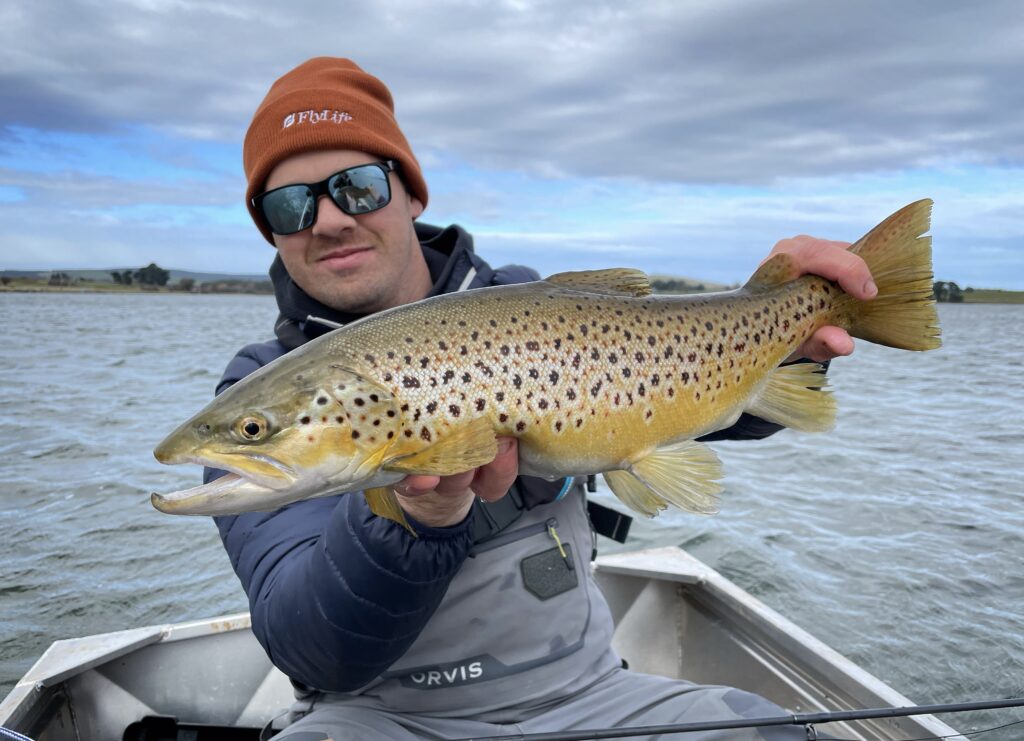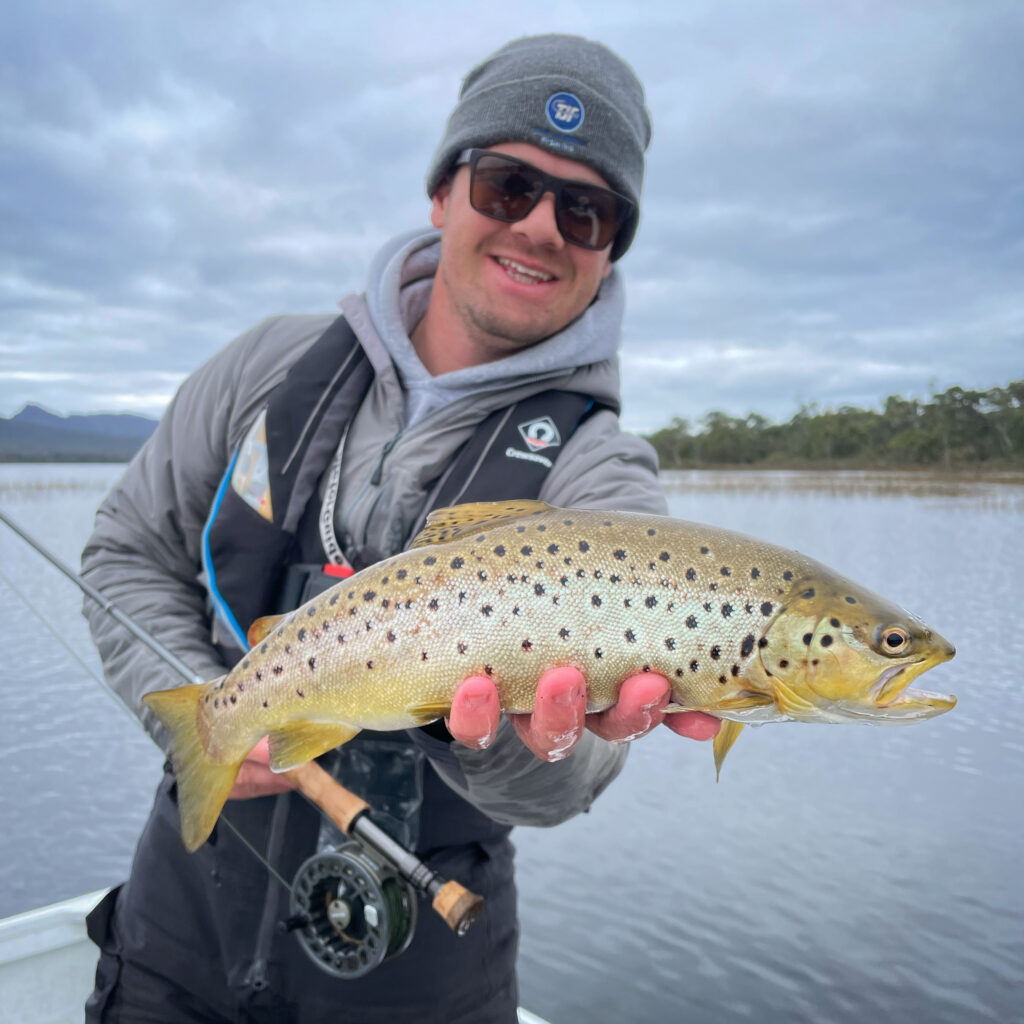
In this episode of The Littoral Zone with Phil Rowley, Tom Jarman, a top competitive fly angler and winner of the 2024 Australian Fly Fishing Championships, breaks down his best strategies, tactics, and flies for fishing Australian lakes and beyond.

Episode Chapters with Tom Jarman on Fly Fishing Australian Lakes
Tom was born in Melbourne, Australia, but he spent part of his childhood in England, where he first picked up a fishing rod. When his family returned to Australia in 2000, his passion for the sport grew and he got into competitive fly fishing at 15.
He later studied environmental science, while spending summers guiding in Tasmania. Now at 31, Tom has built a life around fly fishing—guiding, coaching, and sharing his knowledge with others.
Tom started his YouTube channel to showcase the incredible fishing in Victoria. His videos highlight both river and lake fishing. Tom also designed a range of flies with FlyLife Magazine, built specifically for Australia’s unique fisheries.
The Shrek Fly
Tom and Phil dive into the effectiveness of the Shrek fly. Designed by Joe Riley, this fly stands out with its metallic green and gold hues, mimicking Australia’s native baitfish. It’s so effective that even anglers from the U.S. have adapted it for their own waters.
Check out Tom’s video tutorial on How To Tie Shrek and see why this fly is a must-have in your box:
Key Tips from Competition Fishing
17:38 – Tom shares what he’s learned from competitions that every angler can use:
- Structure your day to maximize your chances of success.
- Location is key. Fish aren’t everywhere, so focus on finding them.
- Cover water fast. In a boat, you’d move quickly to locate fish. Apply this same mindset on the bank.
- Fish key spots. Target windward shores, calm areas, drop-offs, weed beds, and rocky structures.
- Don’t get stuck in one place too long, especially if the fish aren’t biting.
Gear Tips for Stillwater Fishing
Rod
Tom swears by a 10-foot rod for Stillwater fishing. It gives him better casting control, helps manage flies near the boat, and allows for longer leaders. Here’s what he prefers:
- 10 ft 6 wt – Tom’s all-around choice.
- 10 ft 7wt – Great for streamers and windy conditions.
- 10ft 8wt – Helps cast farther in competitions.
Tom also likes stiffer rods in windy conditions for quicker hook sets. A strong rod means better control, especially when fish push farther out.
Leader
Tom keeps things simple when fishing subsurface. Instead of a tapered leader, he uses a level fluorocarbon leader for better contact with his flies. He also uses a beaded fly at the end to help the cast turn over, even in the wind.
When fishing dry flies, he switches to a tapered leader to transfer energy smoothly. He trims off the extra thick butt section and the non-tapered tip, then adds a tippet ring before tying on his tippet.

44:21 – In Victoria and New South Wales, anglers can use two flies, while Tasmania allows three. British Columbia limits you to one, but other places allow more. Tom says that most of the time, two flies work best. A third fly can sometimes help but also increases tangles. If using two, spacing them 10 feet apart keeps things clean and effective.
Loch-Style Fishing
In Australia, lock-style fishing is the common. Most anglers use a drogue to slow their drift and stay in control. Some anglers buy them from fly shops, but many make their own.
Tom says one of the biggest mistakes in lock-style fishing is casting straight ahead. If you always cast in the same direction, you’re just fishing the same narrow strip of water. Instead, try casting at a 45-degree angle. This way, your flies cover three times more water, increasing your chances of hooking fish.
Follow Tom on Instagram: @jarmanfishing
Want to see Tom’s tips and tactics in action? Subscribe to his YouTube channel here.
Check out Australia’s Best Trout Flies – Revisited


